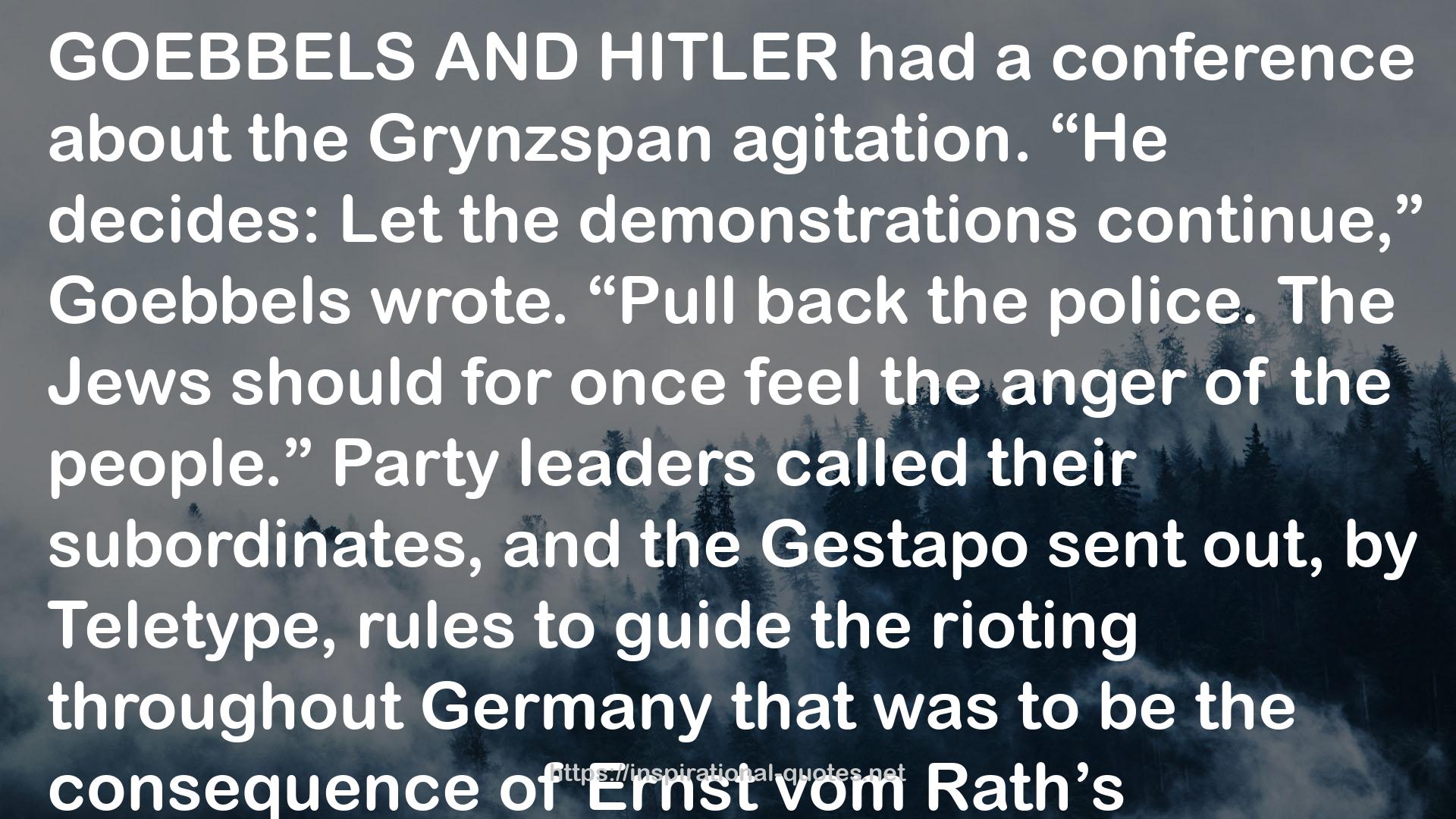" GOEBBELS AND HITLER had a conference about the Grynzspan agitation. “He decides: Let the demonstrations continue,” Goebbels wrote. “Pull back the police. The Jews should for once feel the anger of the people.” Party leaders called their subordinates, and the Gestapo sent out, by Teletype, rules to guide the rioting throughout Germany that was to be the consequence of Ernst vom Rath’s assassination. It was to be savage but orderly. The burning of synagogues was permitted “only if there is no danger of fires for the neighborhood.” Jewish homes and businesses “may be destroyed but not looted.” And foreigners “may not be molested even if they are Jews.” It began at 1:00 in the morning on November 10, 1938. Otto Tolischus reported on it for The New York Times. “There was scarcely a Jewish shop, cafe, office or synagogue that was not either wrecked, burned severely, or destroyed,” he said. “Before synagogues, demonstrators stood with prayer books from which they tore leaves.” The wealthy synagogue on Fasanenstrasse “was a furnace.” Twenty-five thousand people were sent as hostages to concentration camps. It was called Kristallnacht, Crystal Night, because it happened at night and a lot of plate glass was broken, and because the word “crystal” simultaneously distracted from, and raised a toast to, the ferociousness of the rioting—and perhaps finally also because the word echoed the title of one of Goebbels’s favorite books on propaganda technique, Edward Bernays’s Crystallizing Public Opinion. Goebbels had successfully used vom Rath’s assassination to crystallize German anti-Semitism. "
― Nicholson Baker , Human Smoke: The Beginnings of World War II, The End of Civilization
